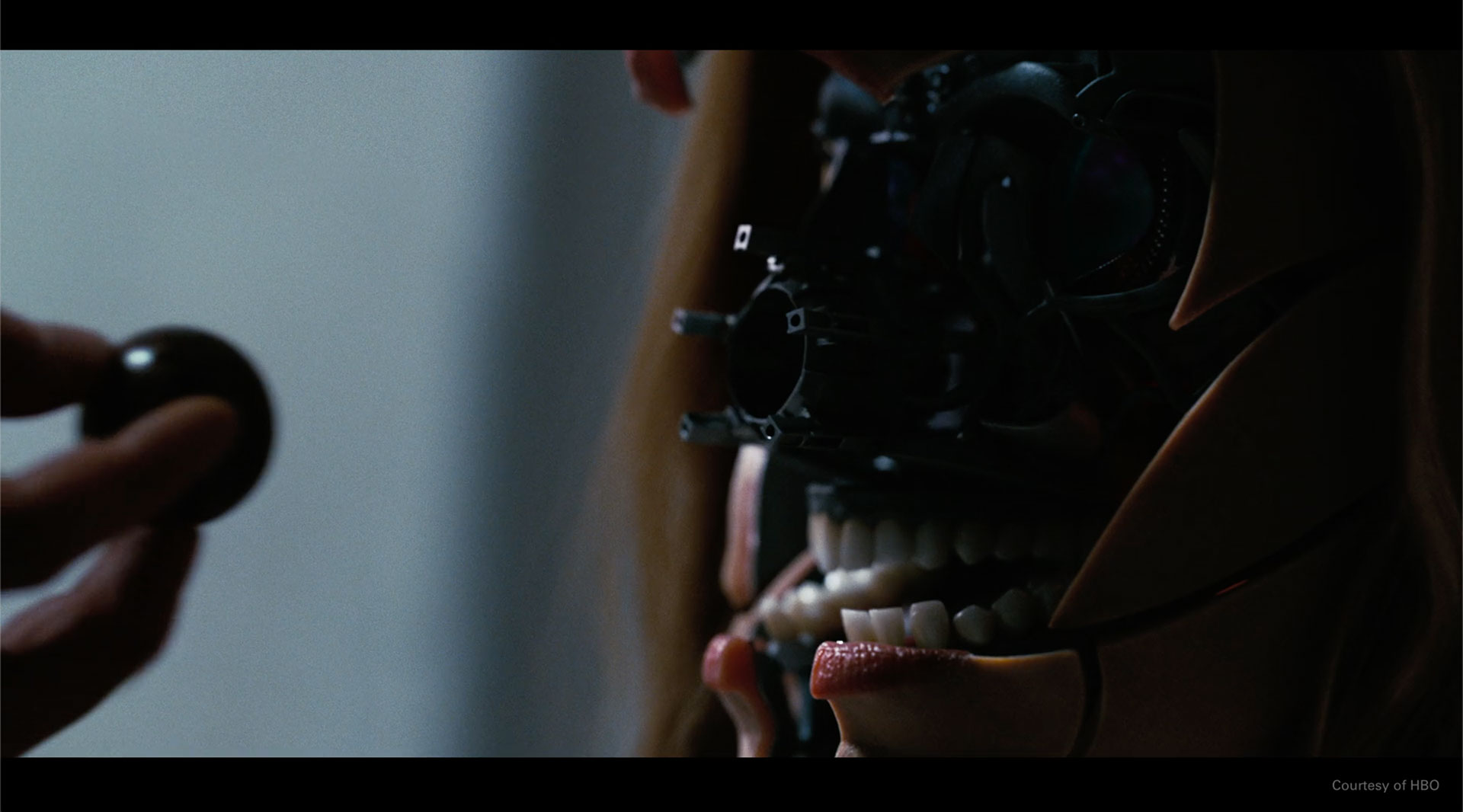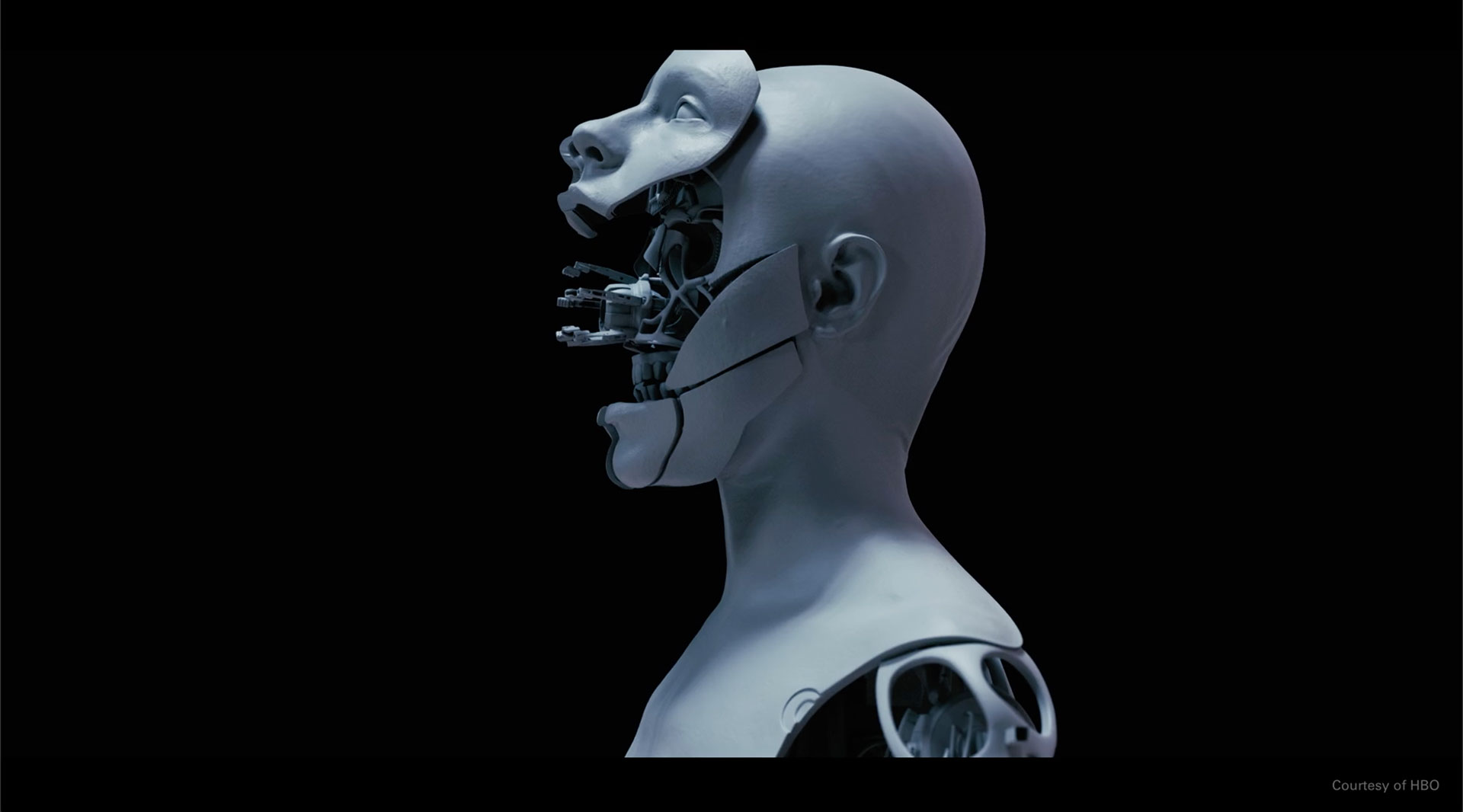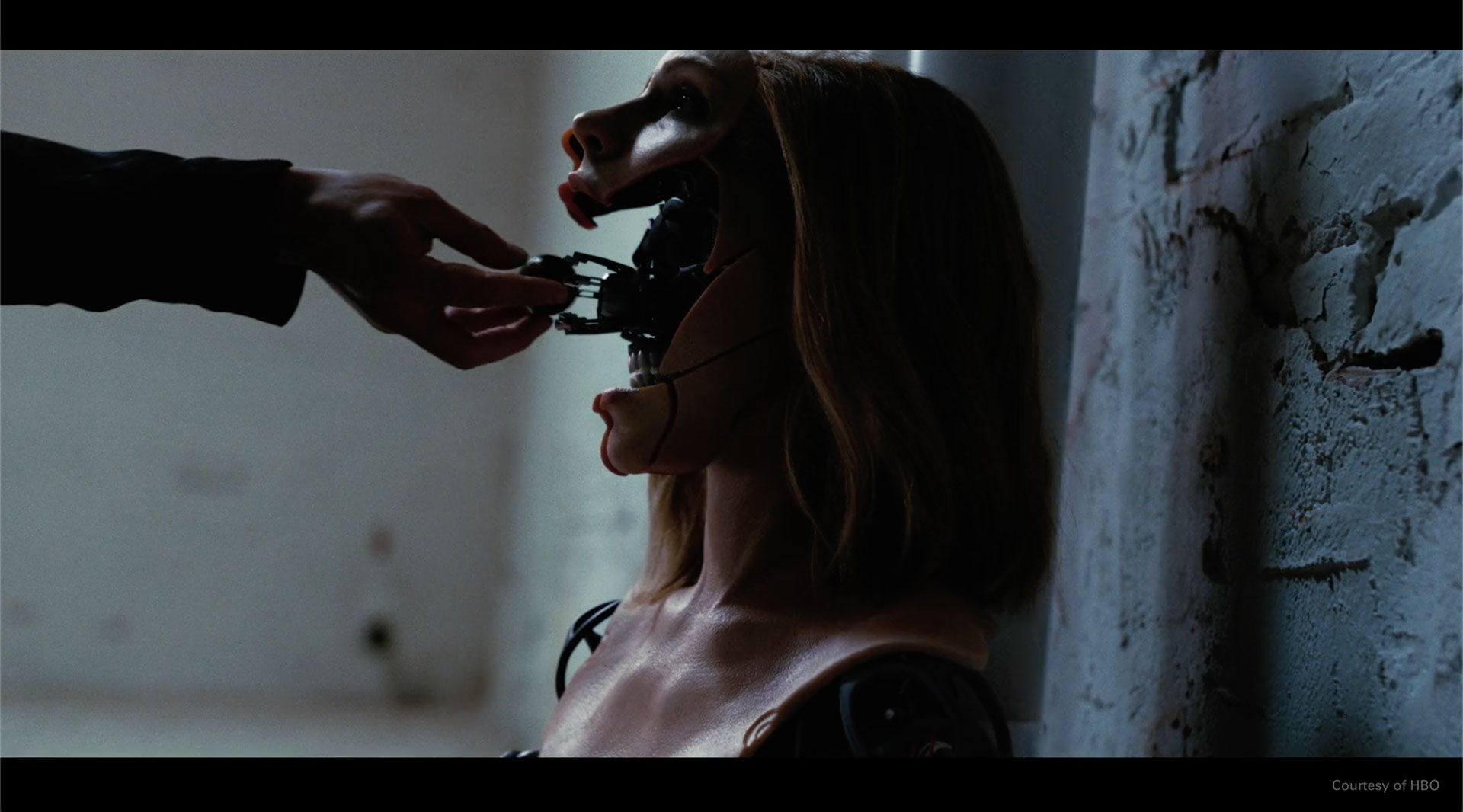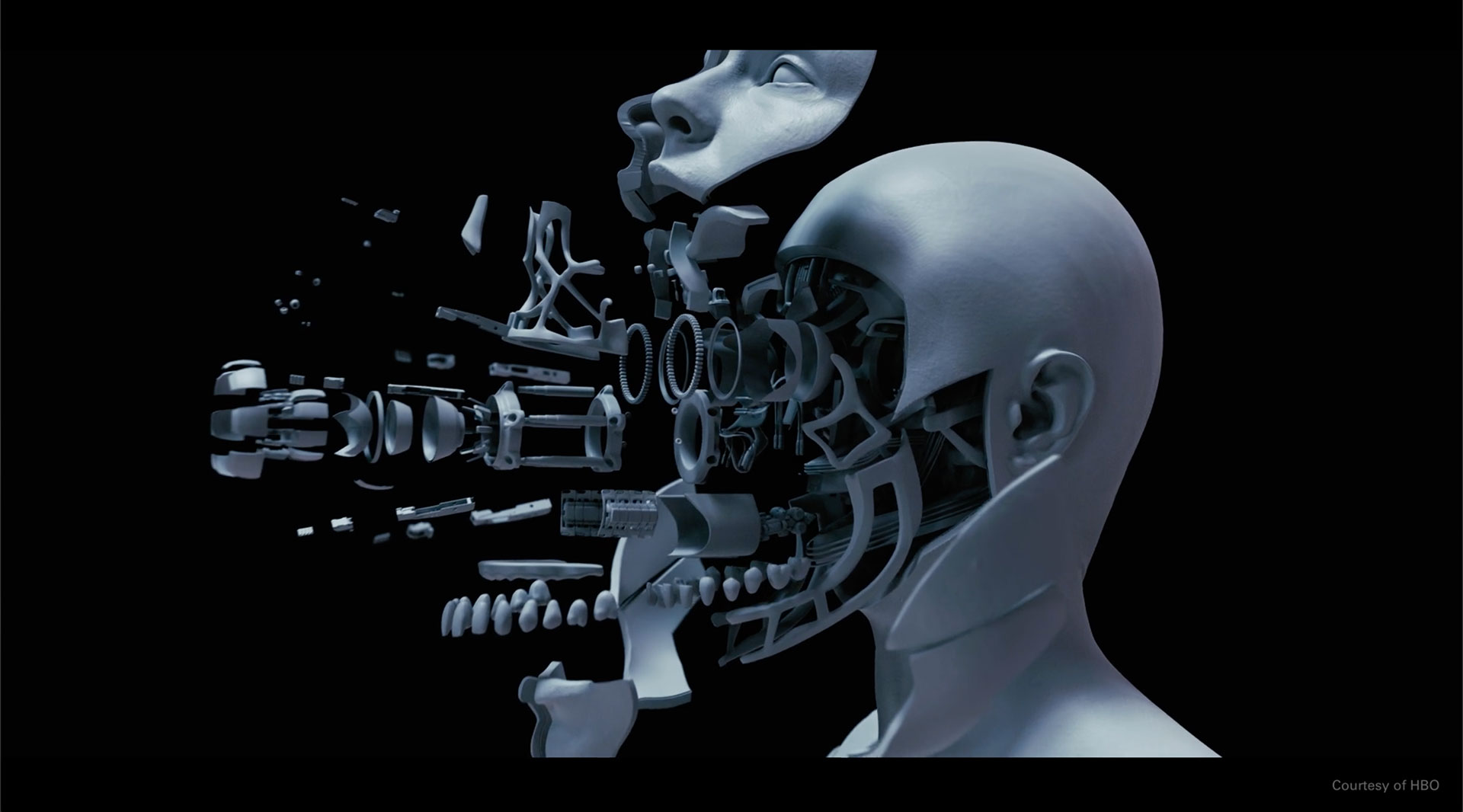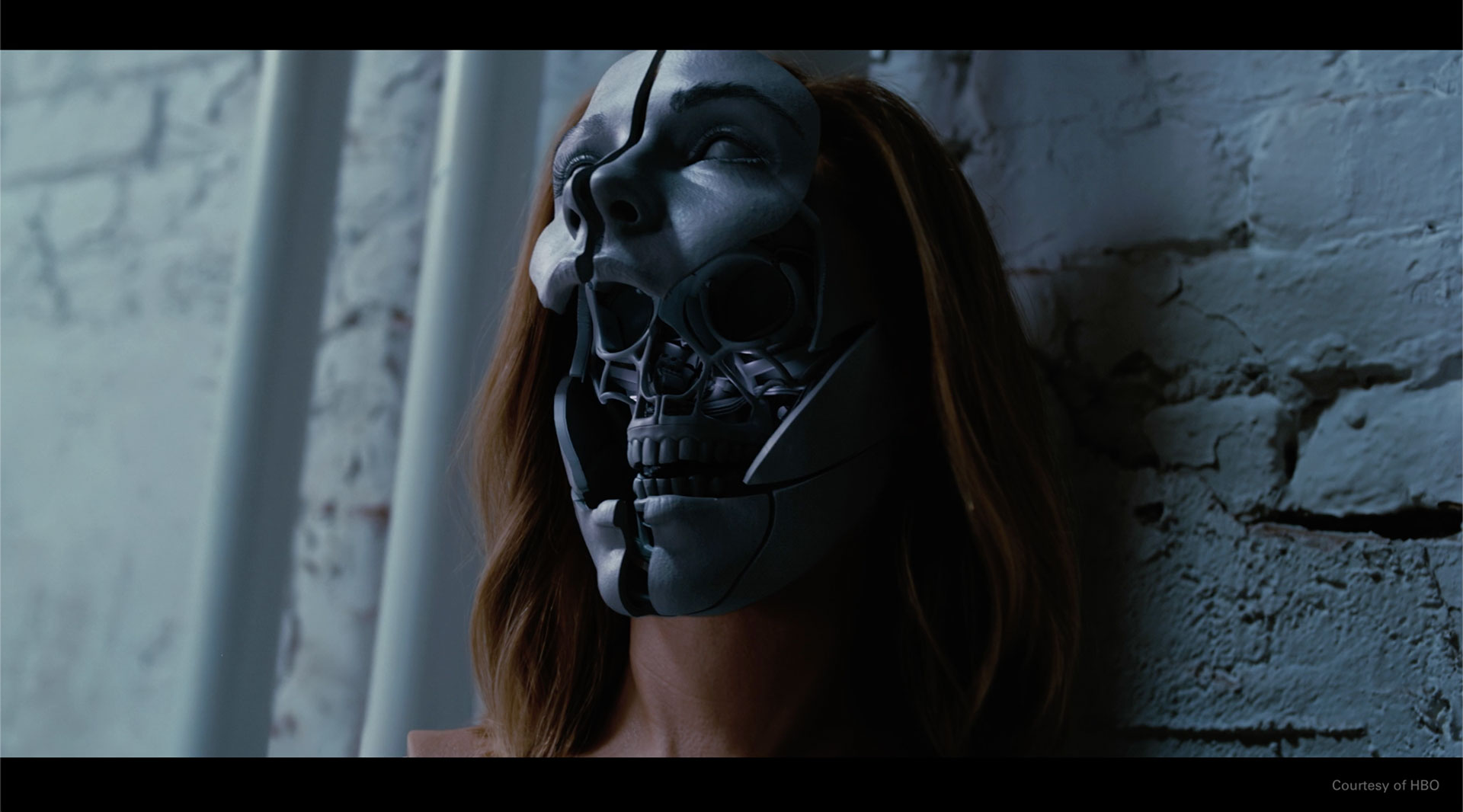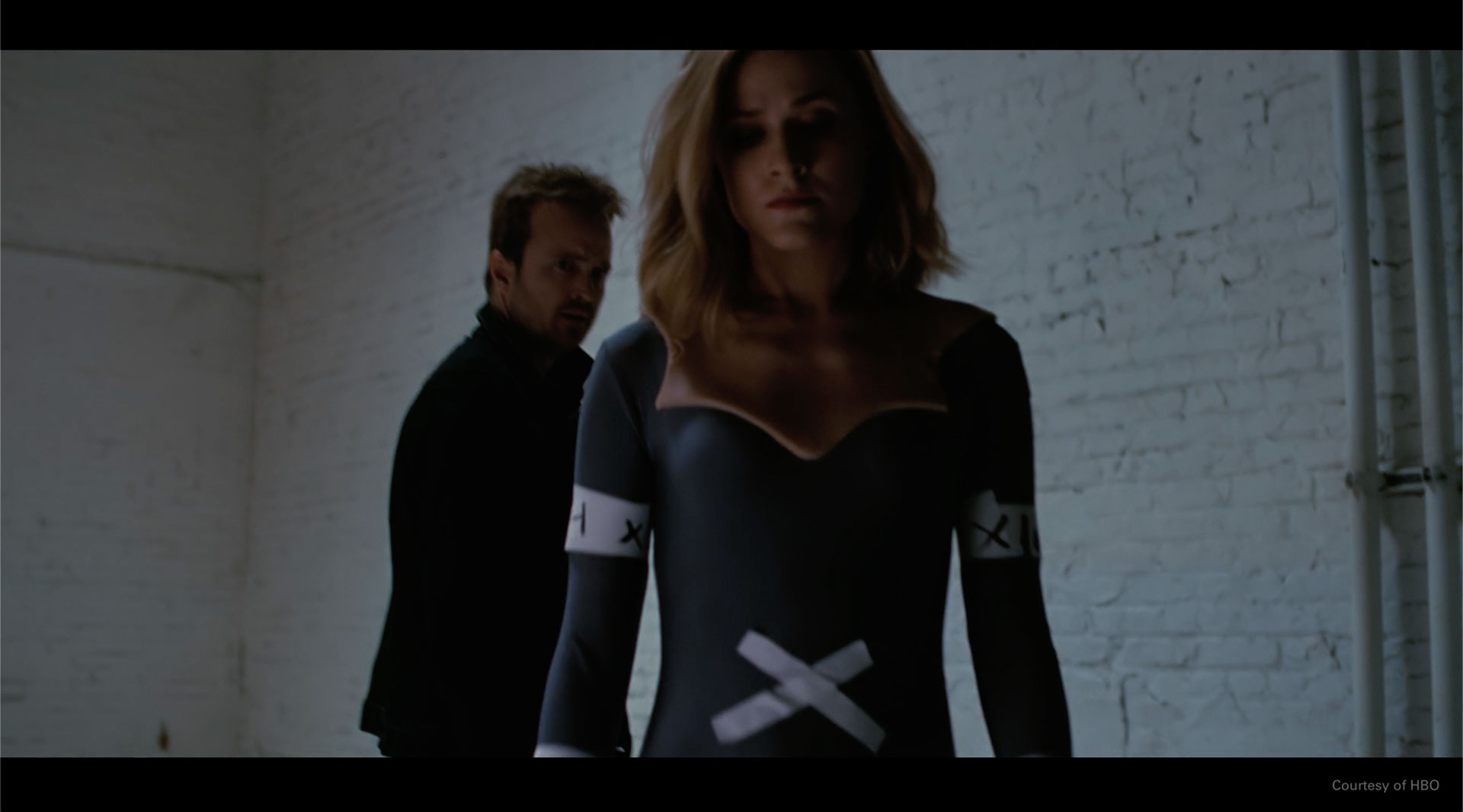Martin Hernblad has been working at Important Looking Pirates since 2017. He has worked on projects such as LOST IN SPACE, KRYPTON, GAME OF THRONES and WATCHMEN.
What is your background?
I have been tinkering with 3D for 12 years now, including game development studies in Sweden, visual effects in New Zealand, and advertising in Switzerland. Along the way I took a liking to the generalist art, specifically creating images from scratch with whatever tools you have available. For the last three years I have had my home at Important Looking Pirates VFX in Stockholm, working in a variety of different roles and have enjoyed each one.
How did you and ILP get involved on this show?
We have a long relationship with Jay Worth and Liz Castro going back to 2011 and we also worked on S1 and S2. ILP was responsible for the Dolores skeleton and Robot face in S1.
How was the collaboration with the showrunner, the directors and VFX Supervisor Jay Worth?
It was a very smooth run for us, the feedback from Jonah [Jonathan Nolan] ensured we stayed true to the story, and Jay made sure our quality of work was to the highest standard. Our goal was simple: create the best looking sequence and minimize any unnecessary need for our clients to get involved, so they could then focus on finishing this incredibly VFX-heavy season of the show. This negated the need for weekly calls, and allowed us to focus on making our work look as believable as possible within the context of the Westworld style and story.
What was their expectations and approach about the visual effects?
Our clients had done a great job on set preparing for the work to come, providing a great range of on-set material for us and a detailed brief for each shot. Naturally there were still a few unanswered creative questions in the beginning but this was for us to problem-solve as we proceeded with the work.
How did you organize the work with your VFX Producer?
Our Production Manager Natalia Przezdziecka handled the overall schedule and detail planning for the show so that I could focus on the creative side of things. We have our own inhouse scheduling tool that handles the broader schedule, and rely on Shotgun milestones to then detail plan each artist’s tasks. We worked closely together to ensure we were meeting our weekly targets / priorities, and that we stayed on budget. Natalia, along with our VFX Coordinator Chelsea Mirus, would ensure a smooth day to day, managing our team, keeping track of all notes and deliveries, as well as maintaining close communication with Liz Castro and her production team. Måns Björklund our Executive Producer talked about budget and I talked creatively with Jay.
Can you explain in detail about the creation of the Dolores skeleton?
In terms of modeling, texturing and look-dev the work was quite straight forward. We did need to update the Dolores skeleton from our season one model to fit into our Houdini based pipeline and make some texture improvements along the way. Our approach was being flexible with her body shape and silhouette during shot production. Due to the short turnaround of the work we decided to forego additional concept work on the sequence, and instead added a set of custom controls to the rig which enabled lighters to easily fine tune and adjust the silhouette and scale of many of the robotic elements in the rig. Adding these as ‘overrides’ effectively in the rig and allowing lighting control over these pieces meant we could skip a more traditional ‘shot sculpt’ step in the pipeline, and also avoid disruptive updating and recaching of the source asset and rig. Additionally, since the data was published as anim information we could easily push that data to other shots either for the whole body or for specific sections of the skeleton.
The skeleton have been already seen in the previous seasons. Did the showrunners asked for some changes or upgrades?
As more and more shots began taking shape, it became apparent that the exact same skeleton from season one would not be appropriate for this sequence. In the original assembly scene of Dolores, her robot body was meant to be delicate and fragile looking, mirroring the state of her character at that point in the story. In season three we’ve come a long way, Dolores has become a more powerful and confident character which gave us a great opportunity to convey that in her robot body. This included changes to her proportions, pose, body language and silhouette, many of them custom for each shot.
Can you tell us more about the rigging and animations?
We used the same overall motion system for both the bodytrack rig and the robot rig, this allowed our animators to take over the matchmove animation directly. Almost all shots required additional animation polish and some were animated from scratch. In addition, the story calls for Caleb to insert the mind pearl into Dolores’ robot face, which is a design that before has not been seen in the series. Our techanim and previs team had a great time designing a cool looking mechanism that would fit well within the style of the series.
Did you use procedural tool for the internal animation of the skeleton?
Our rigging builds at ILP are done procedurally with a modular rigging system, however we did not use proceduralized motion for the skeleton itself.
How did you create the shaders and textures for the skeleton and the CG Dolores?
Dolores’ digidouble was done using fairly standard techniques starting with proper scan data and photography of the actress. The render and groom was done in Houdini/Arnold. Since the robot body was a reprise of our original season one asset, we didn’t want to drastically change the look of the robot body, so our work mostly involved updating the look and shading using our latest pipeline, and tuning it to the sequence to achieve the desired look.
How did you handle the lighting and matchmove challenges?
In terms of lighting, the trick was being flexible and saving as much time as we could due to the short turnaround. Having a good foundation of light rigs and templates helped, but the true key was communication. Each artist made sure everything flowed naturally from rig/animation all the way to comp, in many ways owning the shot and being responsible for its completion. We were also able to save a lot of time and effort by using our shot sequence render tool to be able to push out several shots from the same angle; this minimized iteration time and gave us more time to focus on the more complex and challenging shots. The matchmove was outsourced to Yannix who did a great job of capturing her body motion.
ILP already did the head opening in the first season. How did you upgrade this effect?
We were able to use our boy skull from season one as a base, but many aspects needed to be revised and changed to fit Dolores. Changing the shape, proportions, color and lighting helped us transition to the skull of an adult woman, and we designed and created a brand new mechanism to retrieve the pearl. Since we already had a great reference from season one, this was a nice time to say; ‘What else can we do with it?’. So we had a great time finding the right look for the robot skull that would suit Dolores’ character.
How did you manage the challenge when the head closes and switches to the real actress?
This was a combination of multiple approaches. We started by creating a digidouble face of Dolores and matched it as close as we could within the time constraints we were facing. The CG face served as a good base and is visible in the shot in all areas where we could not project the plate, as well as when the top face sections are moving down. Some fantastic compositing work created the bridge between the CG and live action, using projections where we could and hand animating the edges of the face sections magnetically sealing. The key was identifying where the audience would be looking, and making sure that we especially nailed those areas.
Which shot was the most challenging?
I believe this will vary depending on who you ask, but one that sticks out for me is certainly when Dolores pulls on the skin sleeve over her robotic arm. Our very talented shotsculpt artist Gustav Åhren worked tirelessly to make that shot work, and with all the technical and creative problems it entailed.
Is there something specific that gives you some really short nights?
COVID-19 hit in the middle of this show, and about 2-3 weeks before deadline the entire ILP office moved to working from home overnight. This certainly made me a little bit nervous since the way we worked relied on constant communication between each individual. However, everyone in the team instantly stepped up and made it work no matter what, not to mention our epic tech team for making sure we were able to do so.
What is your favorite shot?
That’s a hard question, I always tried to think of it as a sequence instead of individual shots. We get so attached that I have to remind myself to take a step back and think about what someone watching this for the first time will think. Off the top of my head I would say the shot where Dolores has just stood up from breaking free of the chain, and starts walking past Caleb towards the Delos box. It was not a particularly difficult or long shot, but I just love her pose and body language which translated beautifully from Evan Rachel Wood’s acting to the CG body.
What is your best memory on this show?
Lots of good memories, many of them during afterwork beers with the crew. One of my favorite ones is when I saw the very first slapcomp of the face closing shot. I just kept staring at it, knowing it was going to turn out fantastic.
How long have you worked on this show?
For this sequence, we had 5 weeks to complete the shots, from basic layout to final versions.
What’s the VFX shots count?
For season three we had 40 shots, 33 of which made up the robot Dolores sequence.
What was the size of your team?
In total there were 36 Pirates involved in the show in one way or another, with a core team of about 15.
What is your next project?
Currently working on American TV series – that I can’t disclose the name of yet.
What are the four movies that gave you the passion for cinema?
Personally this is an ever-changing state, but right now the movies that remind me of why I continue to do this are THE FELLOWSHIP OF THE RING, ZERO DARK THIRTY, SPOTLIGHT and SICARIO. Next year they will be different (although LOTR will be hard to knock off the list).
A big thanks for your time.
WESTWORLD SEASON 3 – HOST BREAKDOWN – IMPORTANT LOOKING PIRATES
WANT TO KNOW MORE?
ILP: Official website of Important Looking Pirates.
© Vincent Frei – The Art of VFX – 2020





